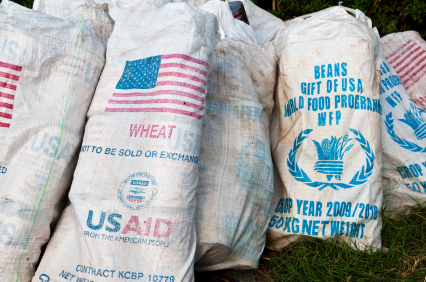By Peter Gill
A fresh famine is threatening Africa, this time in the semi-desert Sahel region of Francophone West Africa. The greatest concern is Niger where a third of the population cannot be sure they will be able to feed themselves or even be fed over the next few months. In the region as a whole there are some ten million people at risk.
The process by which the world has learned of this crisis is familiar. The big relief agencies are allied with the broadcasters, notably the BBC, to report on the growing hunger. This publicity puts pressure on official western aid donors, governments and others, to make sure that threats of mass starvation do not turn into catastrophic reality. Relief agencies add to the pressure by reminding donors that delays to similar East African alerts last year may have contributed to upwards of 50,000 deaths in Kenya, Ethiopia and Somalia.
As a means of raising the profile of hunger emergencies, the media-aid agency connection has been a familiar pattern for decades. It is underpinned by increasingly sophisticated international early warning systems that monitor rainfall and cropping, and predict with accuracy the human consequences of drought and poor harvests. All but the most negligent governments in Africa take their responsibilities more seriously than they did, and mobilise local resources alongside the international efforts. The result is that the world should never again witness suffering on the scale seen in Ethiopia in the mid-1980s where 600,000 died of starvation and a new era in the aid relationship was born.

For the past quarter century, the rich North has not been allowed to forget the poor South. As western economies boomed, money flowed into the official and private aid agencies and flowed out again to the Third World. It was a movement that reached its high point in 2005 with the Gleneagles summit, Bob Geldof’s Live 8 and Make Poverty History. Yet there has been no reduction in the number of hungry people in the world; the reverse, in fact — the number has grown and major food emergencies persist.
The worst of them are those exacerbated by conflict. Fighting hampers relief and restricts the media from detailed reporting on the ground. The epicentre of last year’s East African famine was Somalia whose people have been the victims of chronic political instability for the past 20 years and where the militant Islamist group al-Shabab crudely prevented relief from reaching the starving under its control. In neighbouring Ethiopia, the worst of the suffering last year was in the border Somali region where central government faces an armed revolt — just as happened in the North of the country in the 1980s — and across the continent in Niger the current crisis is made worse by an influx of refugees from insurgencies in Nigeria and Mali.
If the world is getting better at managing the effects of extreme poverty, it is simultaneously failing to make poverty history. After more than half a century of application, the promised transformative effects of aid in the poor world have yet to be realised. Major western economies are now losing ground to new powers in the East, and with it the chance to direct the development effort in future. Western aid agencies have concentrated their efforts on health, education and welfare, yet all the new signs of African prosperity are to be found in home-grown entrepreneurship, in a growing middl


